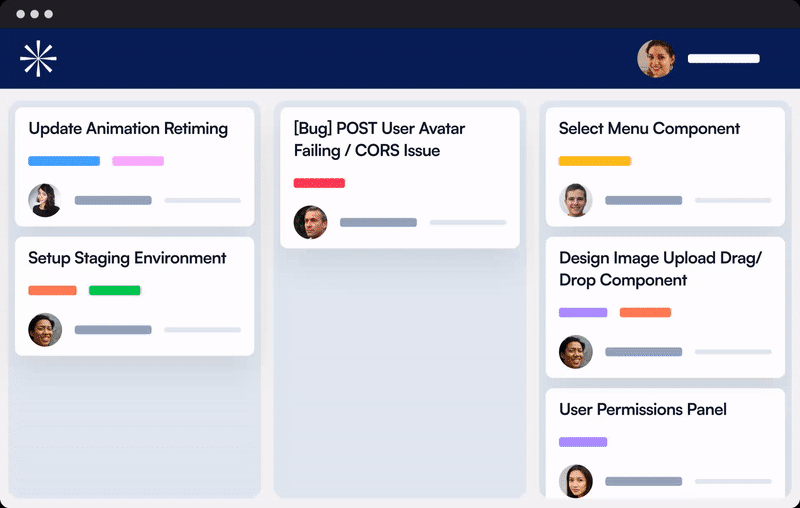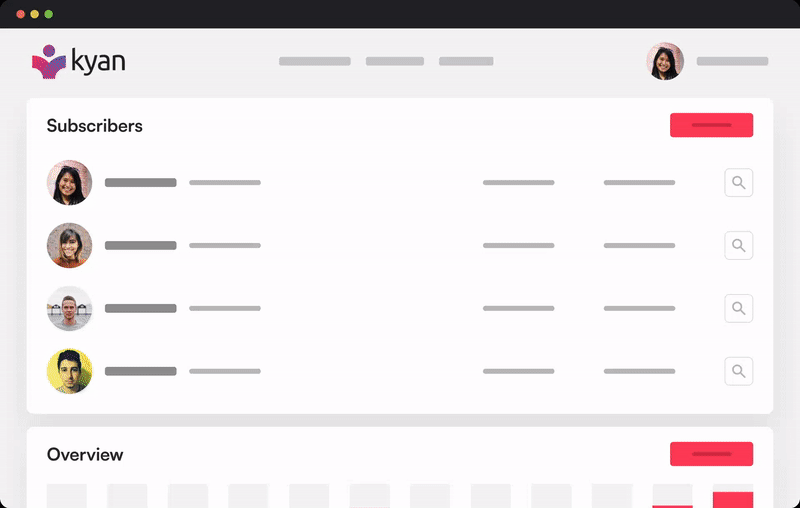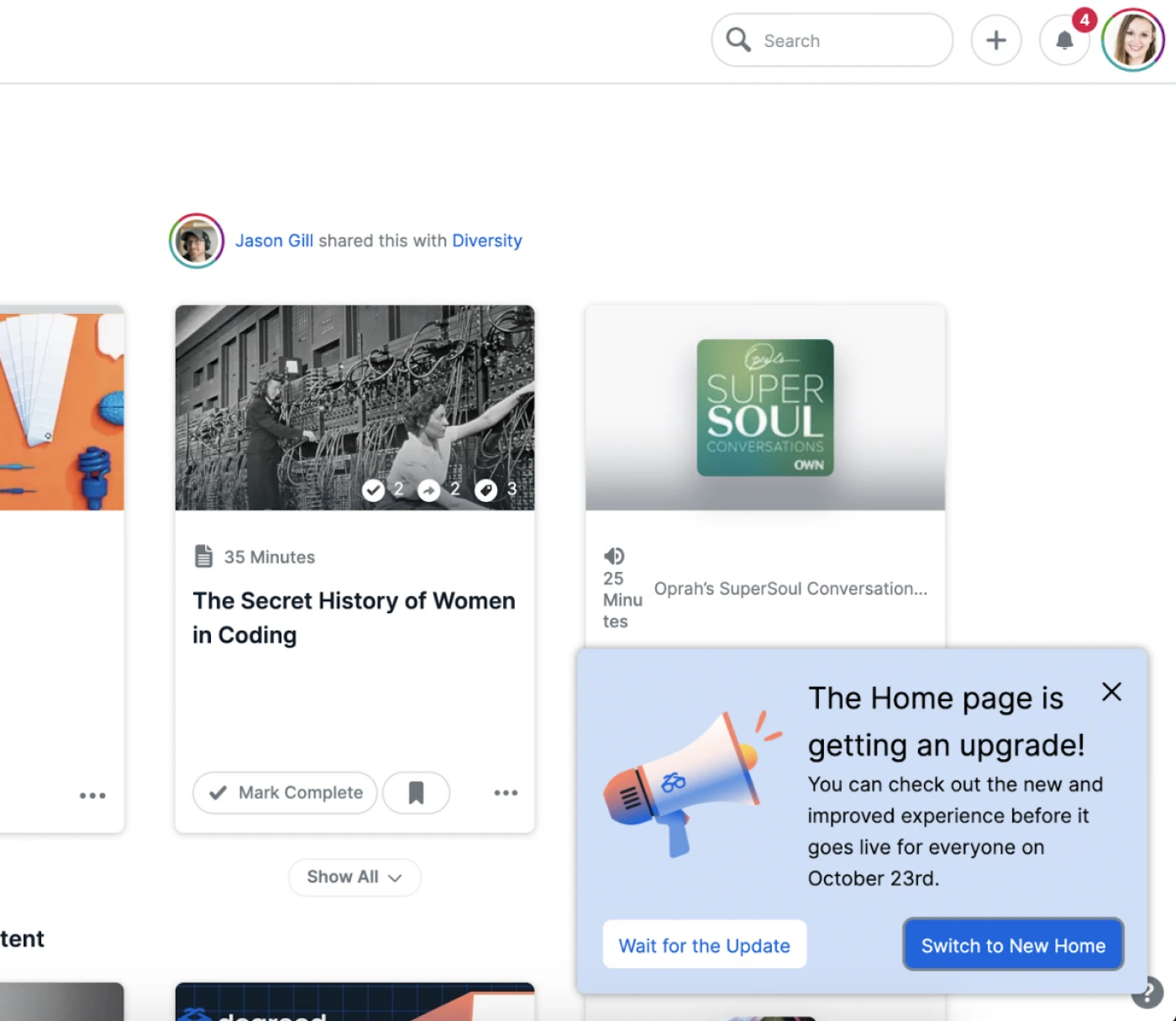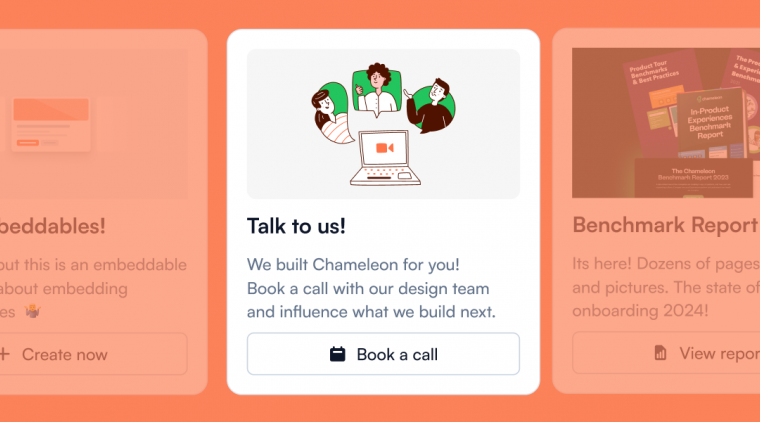If you're reading this, it's likely that you have some idea of what's coming. You've heard about the AI invasion and the potential impact on your industry, and perhaps even your company.
Many SaaS businesses have quickly embraced AI as part of their solutions, but what can we learn from this growing trend beyond the need for generative AI?
In this blog post, we'll reference AI as a case study for successful SaaS businesses trying to stay competitive in 2023.
We'll start by taking a quick look back at other moments of major disruption in the sector and what parallels we can draw with today. We'll zoom into how product-marketing fit has been timelessly defining how, and if, companies will successfully scale and grow, with insights and advice for SaaS start-ups from Kyle Poyar Operating Partner at OpenView.
From there, we'll dig into 3 trends that can help SaaS companies navigate another year of instability in the industry, and validate these by showing how ChatGPT and other companies doing AI are already seeing great results from ticking all of these boxes.
Whether you're an established player in the SaaS space or just getting started, the insights we'll share can help you stay ahead of the curve and succeed in the AI invasion.
How we got here: Mark Zuckerberg and ChatGPT #
We know a lot about the Facebook story and how it began, so we'll just go straight into what happened moments after it went live.
"Within twenty-four hours, we had somewhere between twelve hundred and fifteen hundred registrants"
- Dustin Moscovitz, co-founder of Facebook
Facebook, then called Facemash, was an immediate success. If you ask most SaaS founders how many users signed up for and become immediately active on their product within 24 hours, their answer will be very different from Moscovitz's. For Facebook, the success was astronomical for two main reasons.
1) Facebook satisfied a pent-up demand #
Facebook wasn’t a sudden stroke of genius, it actually came from Zuckerberg’s knowledge that there was pent-up demand for a product of the sort.
"Everyone's been talking a lot about a universal face book within Harvard. I think it's kind of silly that it would take the University a couple of years to get around to it.”
- Mark Zuckerberg for The Harvard Crimson, 2004
2) Facebook had immediate product-market fit #
Zuckerberg’s go-to-market strategy was simple: launch the platform that everyone’s been asking for and share access with all students in the university in an email broadcast. The high demand indicated there was a clear product-market fit with the initial target audience (Harvard students), but this quickly expanded outside of the university's walls.
Product-market fit happens when customers are snatching your product as soon as they can and as fast as you can deliver.
Both of these conditions - pent-up demand and product-market fit - are also what set ChatGPT up for immediate success with even more astronomical effects; ChatGPT reached 1 million users in less than a week.
Where we are now: You need product-market fit or you will fail #
Just like Facebook exposed the widespread need for social media, ChatGPT presents a multitude of both use cases and opportunities for software businesses to grow and expand, which has fueled competition for advanced AI solutions.
ChatGPT has achieved remarkable success in the AI-powered language model space due to its ability to satisfy a demand for intelligent language processing applications. Its product-market fit was immediate, as it resonated with customers who were tired of interacting with chatbots that struggled to understand their queries and deliver relevant responses.
Aaron Levie, co-founder and CEO of Box, has been an active voice on the subject. His reflections on Twitter often ponder the opportunities that advanced AI represents and the pent-up demand that existed for this technology in varied spheres of work.

Following ChatGPT, many PLG SaaS companies like Slack, Notion, Miro, HubSpot, and Chameleon, announced the release of AI features. The common denominator among these announcements is that, in most cases, the promise is to make the user's life easier by producing results with half the effort, essentially, "AI will do most of the work for you".
The AI revolution is showing that, across the board, the demand for products with a clear product-solution fit is the most urgent.

Top SaaS trends for 2023: What we learned from the AI revolution #
While many SaaS companies have embraced AI to help their customers get more value from their products, these examples don't mean that every product needs to hop on the AI trend.
Instead, ChatGPT's trajectory can be read as a case study for new products entering the market and scaling for growth needs to think about making its users' experiences more time and cost-effective.
So let's explore how.
Trend #1: Consolidate your product-market fit #
Kyle Poyar, Operating Partner at OpenView, is a leading voice in SaaS growth. In his recent reports and writings on the future of the SaaS industry, he continues to stress the importance of finding product-market fit before even considering scaling for growth.
We reached out to Kyle for his thoughts on how companies are risking their established PM fits as they cut costs. What should founders consider when extending the runway and trying to improve PM fit at the same time?
"The goal for startups is to nail their product-market fit, then scale it. Premature scaling can lead to wasted spending and a leaky bucket of new customers at an unacceptably high risk of churn," he says and continues to explain.
"I’d suggest keeping the initial team small and scrappy through the process of honing product market fit. Build the early team around a handful of folks who are fast-moving, adaptable, and open to experimentation. From there, lean into what’s working and recruit key executives to double down."
– Kyle Poyar, Operating Partner at OpenView
Whether it's leveraging AI or trying other product-led strategies, establishing or maintaining product-market fit must be a priority for SaaS companies trying to stay afloat.
Trend #2: Prioritize user retention over acquisition #
Caution in scaling is evidently a trend for this year, but it doesn't have to come at a cost to your growth. Holding back on acquisition will keep spending under control, but that means that twice (or even 3x) the attention has to go towards user retention.
If you want to stay afloat, you need to keep users around.
The advice goes for both B2B and B2C companies: this year is about prioritizing your existing users over new ones. Customer retention management is the leading trend of the season.
For most SaaS businesses, go-to-market results are not as astronomical as ChatGPT's. Drop-off rates after the first day can be surprisingly high and at the average SaaS company, 40-60%+ of new users never return to the product.
According to a report from Review42, a software review platform, 65% of a company's business comes from previous customers, which includes contracts being renewed, plans being upgraded, and cross-sells being facilitated.
In his guide to growth amid uncertainty, published even before the impact of AI and ChatGPT, Kyle Poyar advises SaaS teams to focus on three key areas tied to user retention: customer empathy, experimentation, and resilience.
To cultivate customer empathy, businesses should actively listen to their customer's needs and concerns and adjust their strategies accordingly. Experimentation involves trying new approaches and being open to failure, and resilience means developing the ability to adapt and pivot quickly in response to changing circumstances.
By focusing on these three areas, businesses can not only survive but also thrive in uncertain times.
Trend #3: Listen to customers' needs & concerns #
By now you might be thinking that none of what we've said so far is new. And yes, that might be true. The importance of product-market fit, the urgency to focus on customer retention, and the benefits of being customer-centric are core concepts for product-led businesses.
Being product-led doesn't make your business bulletproof, but it can lay the foundation for navigating uncertainty in an industry that often faces turbulence. So, in 2023, SaaS businesses should double their focus on customer-centricity as a key strategy to increase customer retention.
In a highly competitive market, customers have a wide range of options to choose from, and they tend to stick with companies that provide the best overall customer experience.
By prioritizing customer needs and preferences, SaaS businesses can create products and services that are tailored to meet their customers' specific requirements. This can lead to higher customer satisfaction, increased loyalty, and reduced churn rates.
Additionally, by maintaining regular communication and engagement with customers, you can gather valuable feedback that can inform future product development and marketing strategies.
Ultimately, a customer-centric approach can help you build long-term relationships with your customers, resulting in increased revenue and sustainable growth.
In a recent conversation with Janna Bastow, CEO and Co-Founder of ProductPad, Chameleon CEO and Co-Founder, Pulkit Agrawal, discussed how product leaders can achieve customer-centricity.
"Being customer-centric is now a necessity, because if you’re not paying attention to what the customers need and delivering to that, then somebody else is going to, and the customers will vote with their money."
- Janna Bastow, CEO and Co-Founder of ProdPad
🎬 How to be customer-centric as a product leader
Prefer to watch the full webinar instead of reading the summary? Watch it right here 👇
Pursuing customer centrism is easier said than done, so let's take a look at what customers are looking for in 2023 to help you with that approach.
Tips for improving retention and giving customers what they want #
As stated earlier, this article isn't about AI or ChatGPT in particular but uses those as a lens to understand what can drive success for SaaS businesses in 2023.
What we've observed so far in discussions about this technology's impact and the growing number of companies introducing AI to their solutions, is that SaaS customers want to have control over their own product experiences, with personalized use cases and pricing tailored to their needs.
What do customers want? Self-serve models #
If there's one thing that's clear from the success of ChatGPT is that people want to be able to find answers to their questions quickly and efficiently to problem-solve on their own.
Self-serve products and solutions, a growing trend over the past couple of years, will likely continue to be something more and more users crave.
At Chameleon, we're huge advocates of self-serve onboarding or in-app guidance. In our latest Benchmark Report, we've confirmed that not only are our customers embracing more self-serve models of onboarding, but that users are also increasingly opting for this type of customer support.
And how are our customers doing that?
Many are using Launchers, our tool for in-app menus, to offer onboarding checklists with links to short product tours that users can walk through at their own pace, whenever most convenient.

Allowing users to self-serve product knowledge and support is a huge lever of product-led growth, and also a way to offer a personalized experience.
What do customers want? Personalized experiences #
One of the true wonders of AI technology is its ability to personalize experiences. In the last few years, we've seen AI being used behind the scenes to give people that personal touch in customer service or in user experience with the use of chatbots to provide 24/7 support, virtual assistants that provide tailored recommendations for online purchases or bookings, or with speech recognition technology to help users interact with their customer service systems using voice commands.
Products like Mutiny, for example, use AI to help B2B customers personalize their websites for more targeted and higher-converting messaging that is tailored to the user segments that they cater to.
In their predictions for 2023, Mutiny stresses the importance of shifting focus from driving demand to thinking about conversion programs that generate revenue, like personalized messaging.

A large company won’t adopt your product exactly the same way as a small one, just like an individual will have the same interests and needs as another for B2C businesses. In other words, personalization can be a huge driver of user retention and product adoption.
What do customers want? Fair pricing #
One big reason you might see churn as we move further into an economically sensitive year in pricing. If customers are not seeing ROI, they will churn. If your prices are way higher than equally valuable alternatives, they will switch.
We asked Kyle Poyar about the price disruptions (changing models and price points) that we can expect to see this year.
"Regardless of market conditions, pricing is the most powerful and most immediate lever to drive more profitable growth. And yet it’s consistently overlooked in the average startup."
– Kyle Poyar, Operating Partner at OpenView
His advice for early-stage companies trying to nail pricing is to have a clear owner for their pricing strategy, conduct extensive pricing research, and run pricing experiments.
In the context of the current economical scenario, he suggested that "as folks look to extend the runway and do more with less, pricing needs to be part of the mix," and continues:
"It’s my belief that you can rarely A/B test your way into optimal pricing. There are simply too many variables at play and it takes too much time to see the full picture of how pricing changes impact downstream metrics such as net dollar retention."
– Kyle Poyar, Operating Partner at OpenView
In order to give customers prices that work for them while also keeping your ARR balance in check, Kyle recommends:
- 1 Conducting pricing interviews or surveys with your target audience.
- 2 Using those insights to inform future pricing changes.
- 3 Piloting them with select cohorts of new customers.

In-app surveys are the best way to get your users involved
Use Chameleon Microsurveys to deeply target users for feedback and insights on product experience. And we also do A/B testing!
Conclusion: Putting expert advice into action #
To finalize this reflection on the top SaaS trends for 2023, we asked ChatGPT to summarize the leading recommendations coming from SaaS industry experts. Here's what it had to say.
In times of economic downturn, customer retention becomes a crucial aspect of business survival, especially for SaaS companies. Here are some strategies that SaaS industry experts recommend for businesses to beat the economic downturn with effective customer retention:
Focus on Customer Success: Provide personalized support, training, and onboarding, and work closely with your customers to understand their needs and goals.
Leverage Data and Analytics: Use data and analytics to gain insights into your customers' behavior, usage patterns, and needs to identify potential areas of improvement and opportunities to upsell or cross-sell your products.
Offer Flexible Pricing and Plans: Consider offering flexible pricing and plans that can accommodate the varying needs and budgets of your customers.
Focus on Customer Experience: Make sure your product is user-friendly, easy to navigate, and provides value to your customers. Offer timely and effective customer support, and solicit feedback from your customers regularly to improve your product.
That sounds about right! This year is all about investing in your existing user base and making their product experience worthwhile. If you build your growth strategies around this advice, hopefully, you'll make it through SaaS winter with barely a scratch.

Increase user retention with personalized in-app support
Boost retention rates by up to 50% with our low- and no-code tools for in-product UX customization and product adoption.






